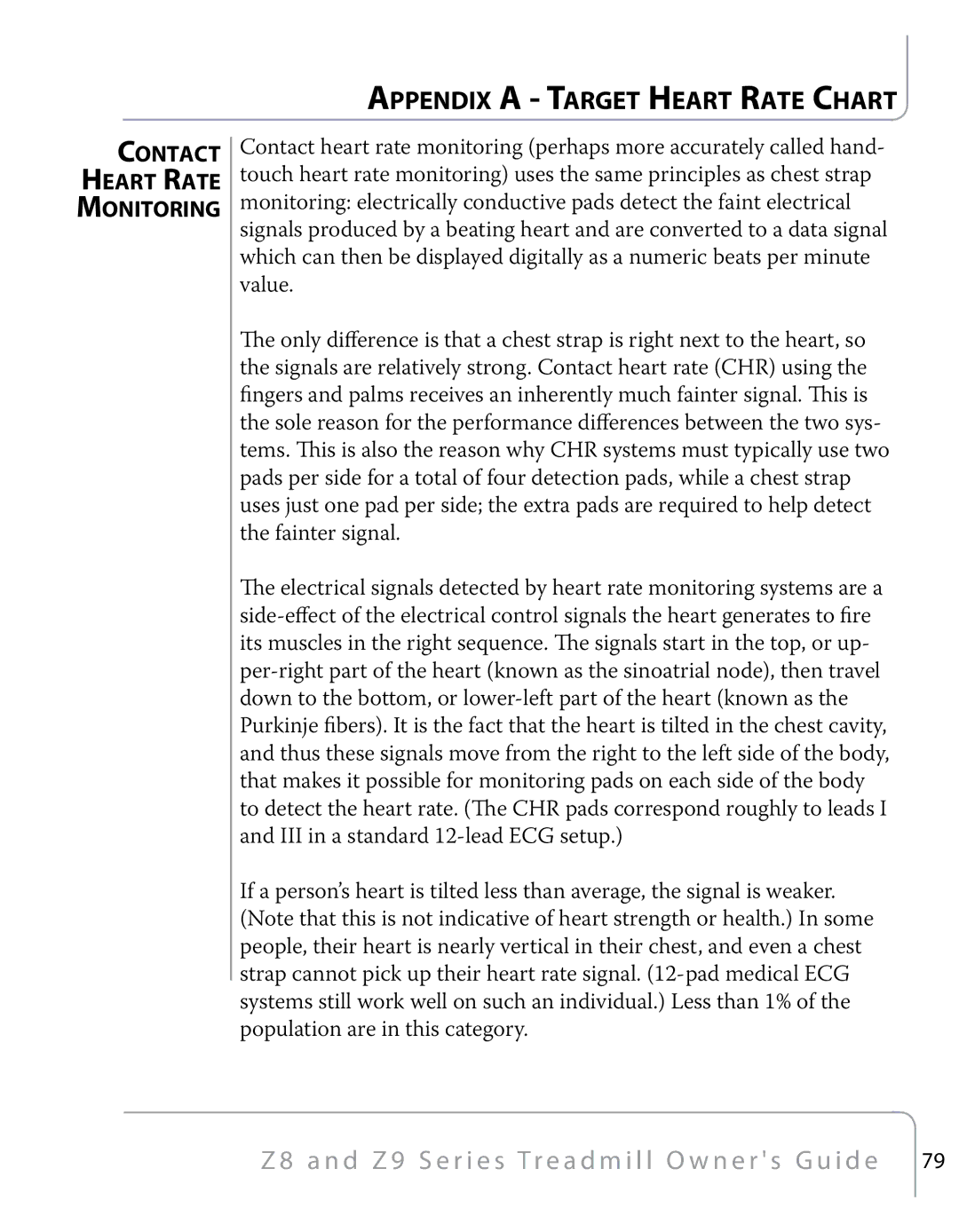
Appendix A - Target Heart Rate Chart
Contact
Heart Rate
Monitoring
Contact heart rate monitoring (perhaps more accurately called hand- touch heart rate monitoring) uses the same principles as chest strap monitoring: electrically conductive pads detect the faint electrical signals produced by a beating heart and are converted to a data signal which can then be displayed digitally as a numeric beats per minute value.
The only difference is that a chest strap is right next to the heart, so the signals are relatively strong. Contact heart rate (CHR) using the fingers and palms receives an inherently much fainter signal. This is the sole reason for the performance differences between the two sys- tems. This is also the reason why CHR systems must typically use two pads per side for a total of four detection pads, while a chest strap uses just one pad per side; the extra pads are required to help detect the fainter signal.
The electrical signals detected by heart rate monitoring systems are a
If a person’s heart is tilted less than average, the signal is weaker. (Note that this is not indicative of heart strength or health.) In some people, their heart is nearly vertical in their chest, and even a chest strap cannot pick up their heart rate signal.
Z 8 a n d Z 9 S e r i e s Tr e a d m i l l O w n e r ' s G u i d e
79
